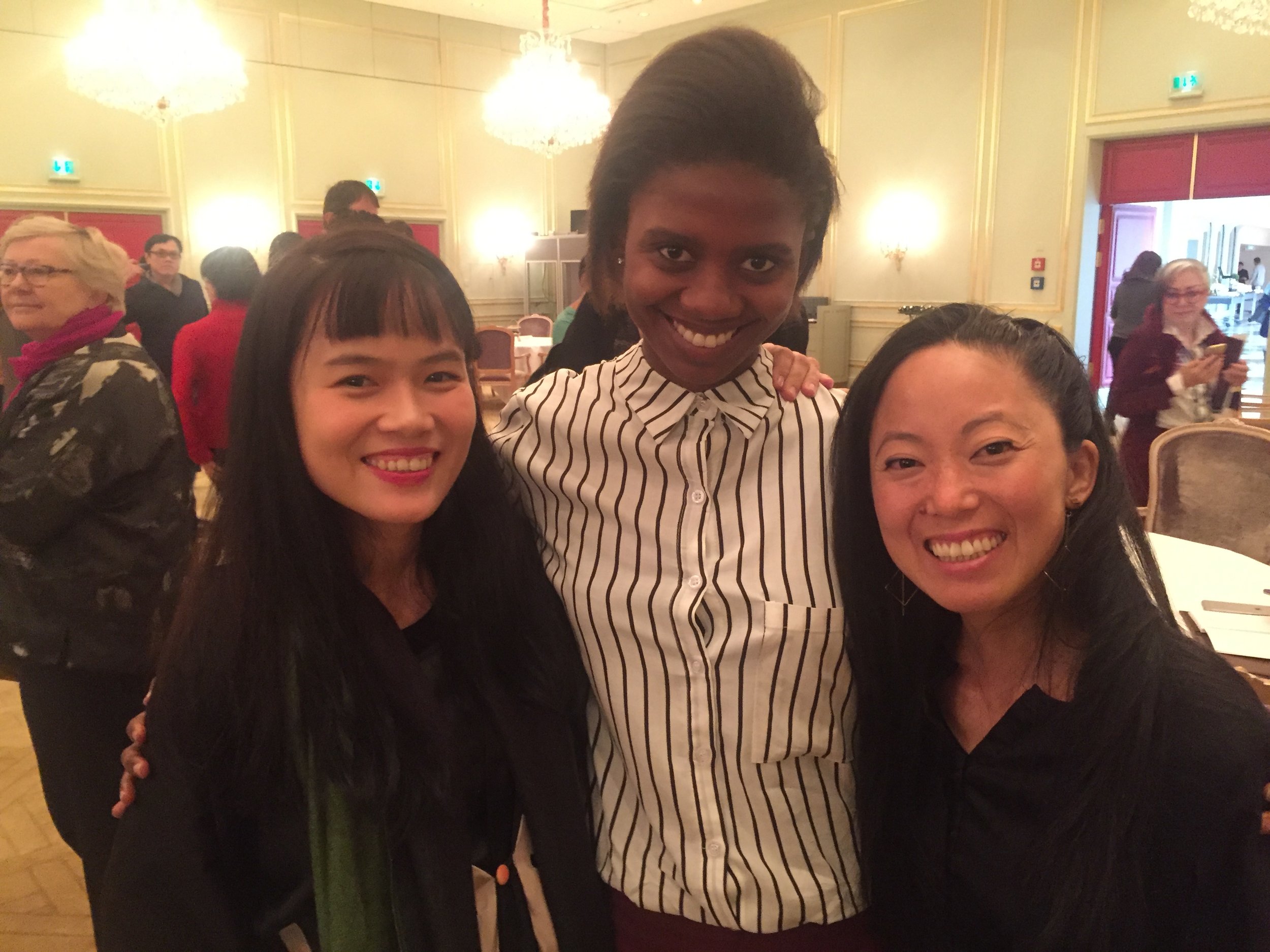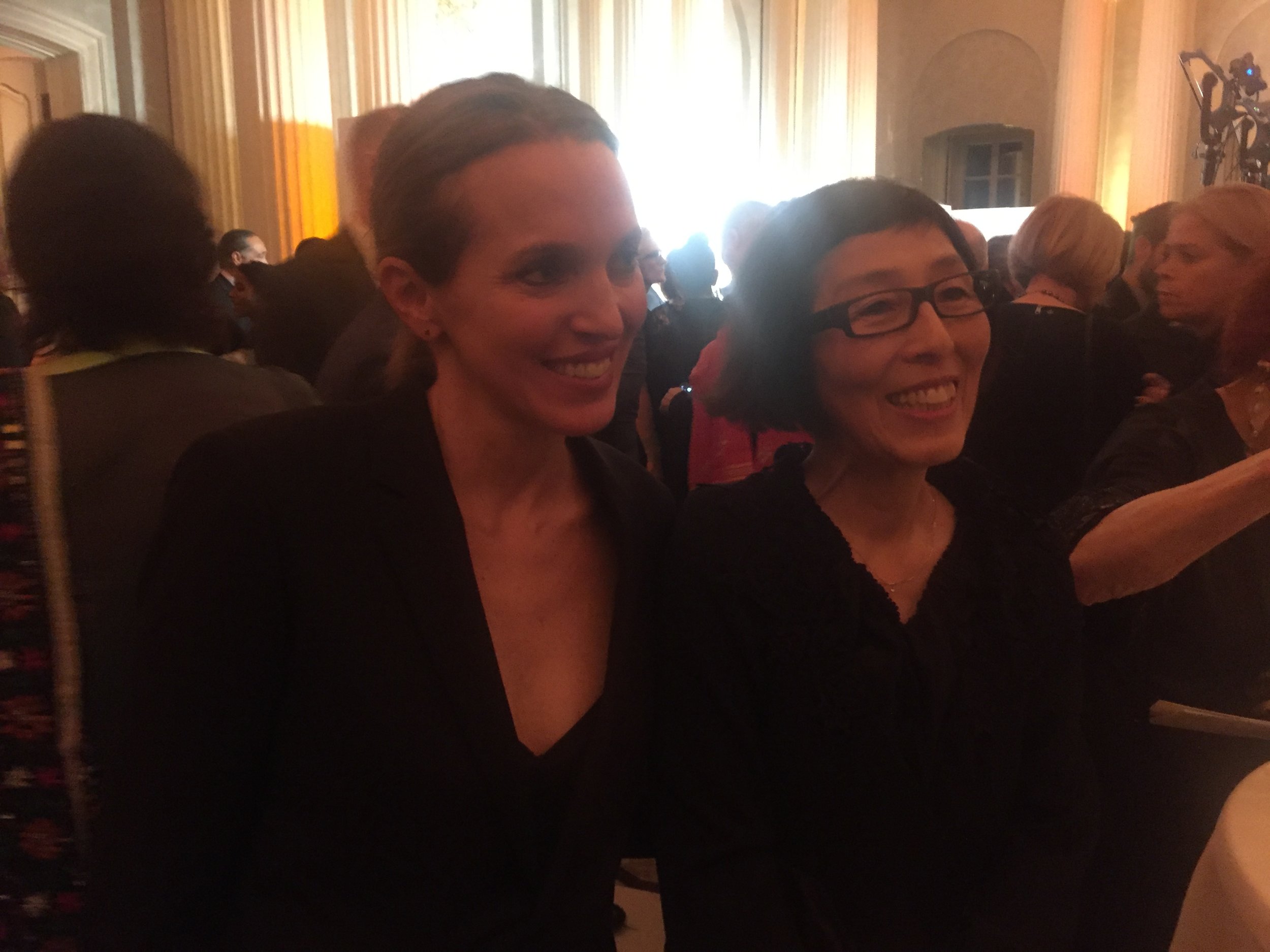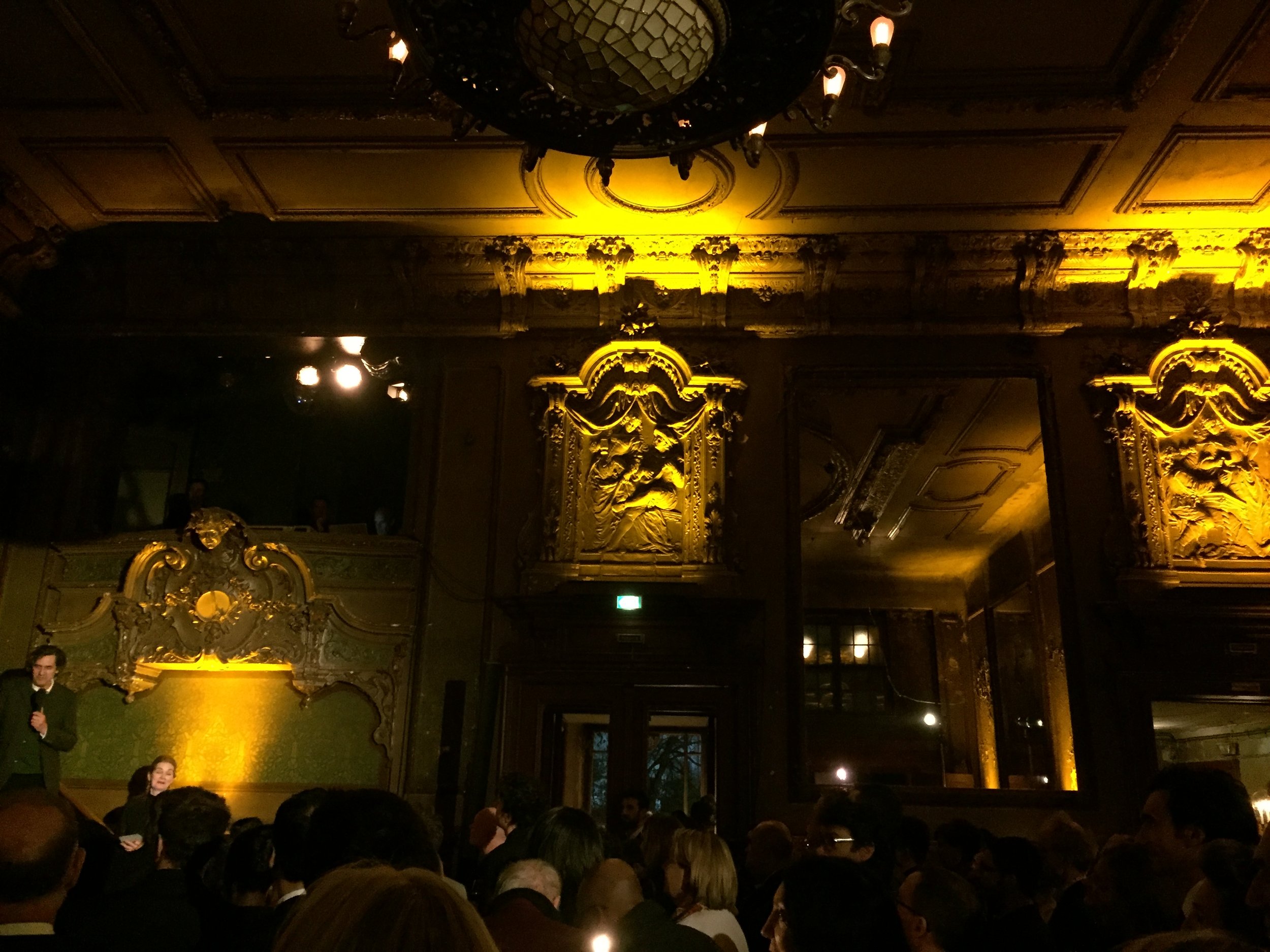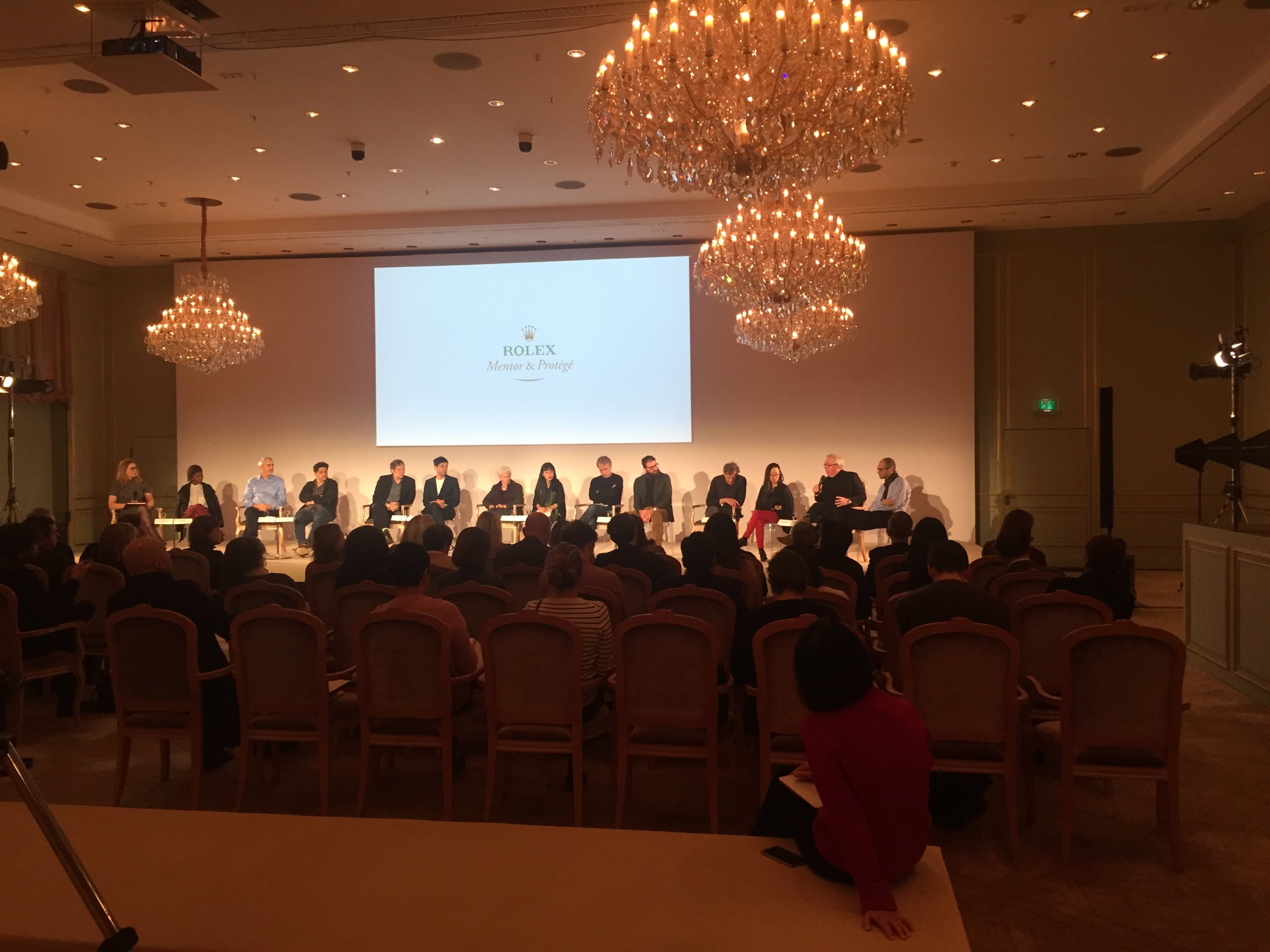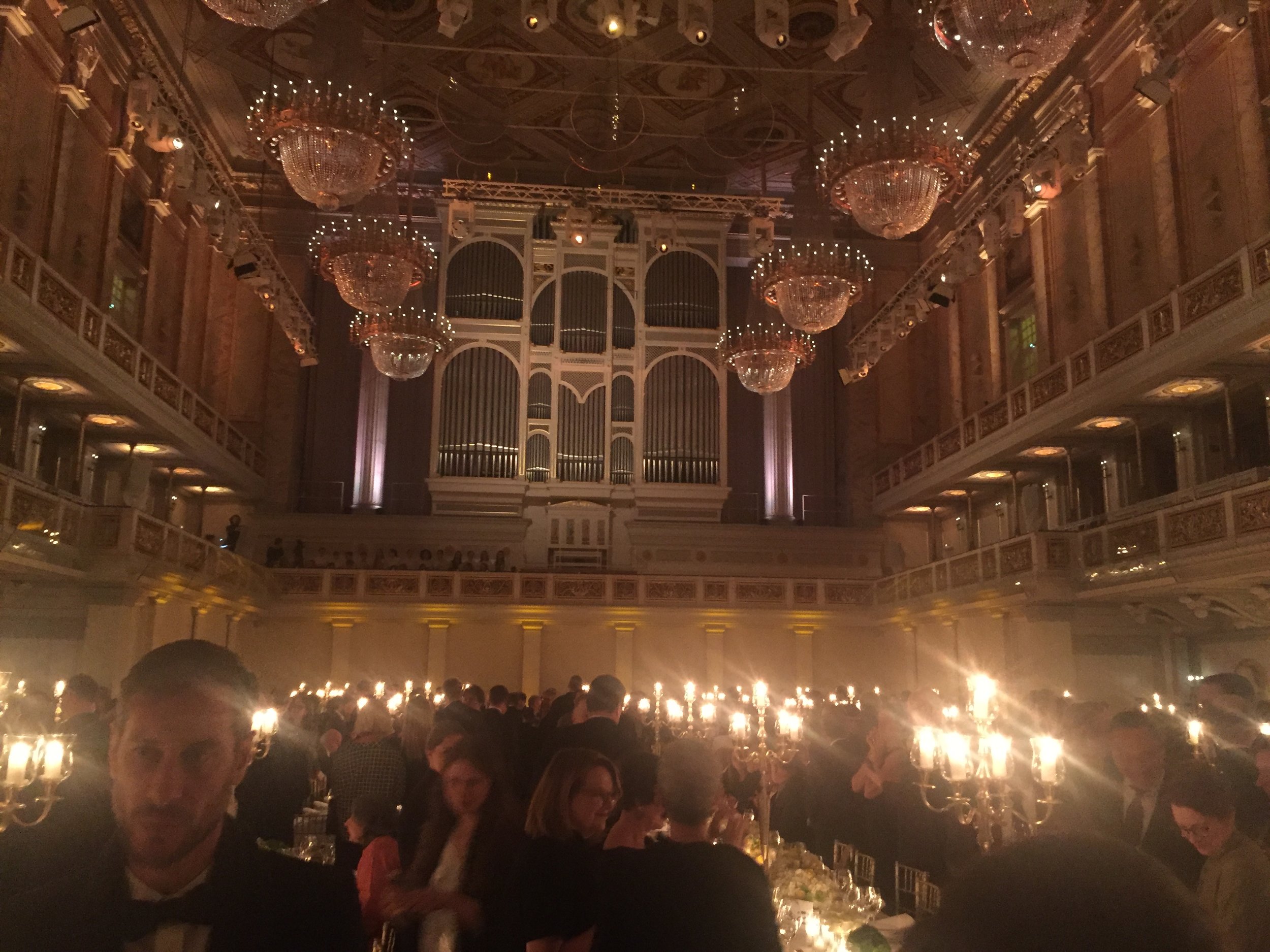When Christopher Isherwood came to Berlin in 1929 to follow his mentor W.H. Auden, he was looking for freedom and an artistic community that would nourish his unconventional spirit and early writings.
Last week, seven Rolex protégés in architecture, dance, film, theater, music, visual arts and literature followed their mentors to Berlin after more than a year of collaboration, learning from each other, hanging out, traveling and making something new and to present the fruits of their labors.
Berlin was a perfect location. Though chillier than the last round of presentations (in Mexico City) outside, inside the spectacular locations Rolex had secured for the presentations and panels made one feel as if a kind of benevolent queen—in this case Rebecca Irvin, head of Rolex Philanthropy-- had opened her architectural jewelbox—just for us, the participants, mentors and protégés from past cycles as well as advisors in all the disciplines and the general public. To be in the Gemaldegalerie or the Staatsbiliothek or the Deutsches Theater or the Kammerspiele or the Staatsoper seated among so many talents was truly a ‘pinch-me’ moment.
But of course there is always the shadow of Berlin Wall—and the remnants of the Stasi Prison which I also visited on this trip, a troubling reminder that walls and intimidation only accomplish the desire to break free. In the middle ages walls were fortification against invaders. In Berlin they kept people in.
But Berlin is now so welcoming. Musician Protégé 2012, Dina El Wedidi (who was mentored by Gilberto Gil) tells me about what is happening politically in Egypt and has even come to Berlin to produce her new record which depends on the sounds of trains.
David Chipperfield Mentor 2016-7 who has had major commissions in Berlin and now has a second home there commends the openness and easy cross fertilization between the arts and politics that is hard to replicate in London.
It’s a challenging time for philanthopists. Boards of Trustees and owners, once closeted in cushy board rooms and able to hide behind large edifices are now being held to account. Are works to be repatriated, restituted or deaccessioned? Do the actions of your family business in the opioid epidemic make you an unfit patron? Are the owners of companies or publications or film studios responsible for the actions of the people they employ?
Rolex strives to be different. Other than the culminating dinner, the rest of the events are free, open to the public, and where anyone has the rare opportunity to find themselves seated beside a celebrated artist and engage in dialog and feel truly connected to those we so admire. During the course of their collaborations the mentors and protégés are left largely to themselves. If I sound gushy it’s not to be helped: looking around at the artistic firmament, it’s hard not to be impressed.
Though the Mentor Protégé program has the goal of helping artists (which it does, handsomely), it also allows an extremely rare opportunity for both leading and up and coming stars to mingle with each other. All through the weekend I saw protégés from previous cycles huddling like football players sharing insights and strategies before they take the field:saving seats on the bus, hearing about the new symphonies, films, record albums, dance installations, and often, the colder bath that awaited them outside the program.
For the mentors and advisors too, it’s stimulating. Architect advisor Tatiana Bilbao tells about her new commission for a nearby monastery. Architect Kazuyo Sejima sweeps by in a much admired black long skirt only the Japanese can do properly. Wayne McGregror, Lucinda Childs and Alexei Ratmansky—three very different style choreographers-- sit in the same row and watch Dance protege Londiwe Khoza and her mentor Ohad Naharin present his particular form of dance process he calls Gaga. Mia Couto and Julian Fuks share their experiences as writers processing the world from widely different parts of the colonial Portuguese era. Olaffur Eliasson, whose studio is in Berlin, recounts memorable evenings at the Clarchens ballroom, where the particpants meet casually in open seating the first night. Alfonso Cuaron shows a few clips from his as yet unreleased new film which is already eliciting raves and says he is so happy to have returned to Mexico for its production after a series of huge budget international films. Anish Kapoor and Homi Bhabha huddle at the four-wall film presentation of Robert Lepage’s theater protégé Matias Umpierrez (in which Legpage is also an actor). Film and Video stand out as the disciplines that are now in every proteges toolkit.
Not all the events are equally well received. Much is made of the fact that David Chipperfield’s panel is all-white male dealing with urban design fixes for London, a first world city. (David Adjaye, next cycle’s architecture mentor, will surely fix that.) At Bhabha’s panel discussion on power there is a feeling of more inclusiveness. (His wife Mira, a human rights scholar and also a Harvard professor, expresses concern about government crackdowns in a quiet moment at breakfast.) Tackling big projects, big themes and big ideas are necessary as others try to shrink our world. Learning to listen. Learning to collaborate. Opening up boundaries. These were the themes repeated over and over again by all participants.
The protégés—all of whom already have some reputation in their fields—are not daunted. Re-armed with individual attention from some of the best creative minds in the world, they jump over personal stumbling blocks and fears.
I was most impressed with Joan Jonas’s protégé, Thao-Nguyen Phan from Vietnam, a small, delicate, young woman whose size belies her ambitious historical body of work comprised of watercolor, construction, and most especially a brilliant video—really the beginnings of a feature film—on Vietnamese schoolchildren that references her own past. Pauchi Sasaki and her team of musicians, lighting and production designers end the weekend in a rousing production which has a bit of Philip Glass (her mentor) but mostly a lot of Pauchi, a violinist, and an exciting new female percussionist Aleksandra Suklar whom we all agree we want our daughters to emulate. Pauchi—also quite diminutive-- has made her own costume out of acoustical Styrofoam blocks that resemble a Pierre Cardin dress. These women, along with the many talented young women who have passed through the program, make me feel so hopeful.
Gossip is, of course, traded, especially fallout from the #MeToo scandals that have hit artistic circles close to home (Chuck Close, Peter Martins). Palestinian Annmarie Jacir and Argentinian Celina Murga, both previous film protégés, had thoughtful comments to add to this conversation. Malian Rokia Traore bemoans what is happening to artists under burgeoning repressive regimes. But in general, the atmosphere is supportive and upbeat and the few journalists who are there are not in an adversarial mode.
Still,life intervenes. Film Editor/mentor Walter Murch’s son has just had surgery, Ohad Naharin’s father has just died, Julian Fuks carries his very young baby around for most of the presentations.
The next cycle will be modified, reduced to four disciplines for two years, and then another three or four for a second round but individual funding for participants, already generous, will increase. I just wish so many more could benefit from this effort.
Not all protégés will end up with a hit like Christopher Isherwood's “Cabaret” (which, after all, was a fourth-gen iteration of The Berlin Stories). But the program gives permanent lie to the fear of encroachment and battening down the hatches against outside influences. Instead it is vibrant testimony that the freedom (and resources) for artists to interact and derive sustenance from each other is crucial not only to artistic practice but to our world. Global forces conspire to interrupt this flow and exchange. (Trump's new proposed budget once again flays the Arts and Humanities Endowments while ramping up defense.) To see Mariam Kamara, the new Architecture protege, get up on the dance floor in a spontaneous burst of exuberance or to watch South African dance protégé Londiwe Khoza leap to Do you want to Dance, an American hit from the 50s, after confessing to ‘releasing blockages” is to feel that we really are one connected human chain.
Naharin’s Gaga method depends on taking away mirrors. Perhaps Gaga can be exponentially expanded. We need to look inside ourselves and out, at each other, but not so much at our exterior image.
On my way to Berlin, the US government was headed to its second shutdown in as many weeks and Angela Merkel was in the last stages of finally being able to form a government. In the face of so much unsettling and divisive news, it was encouraging to see citizen-artists from all over the world join together to celebrate the arts, and each other.
